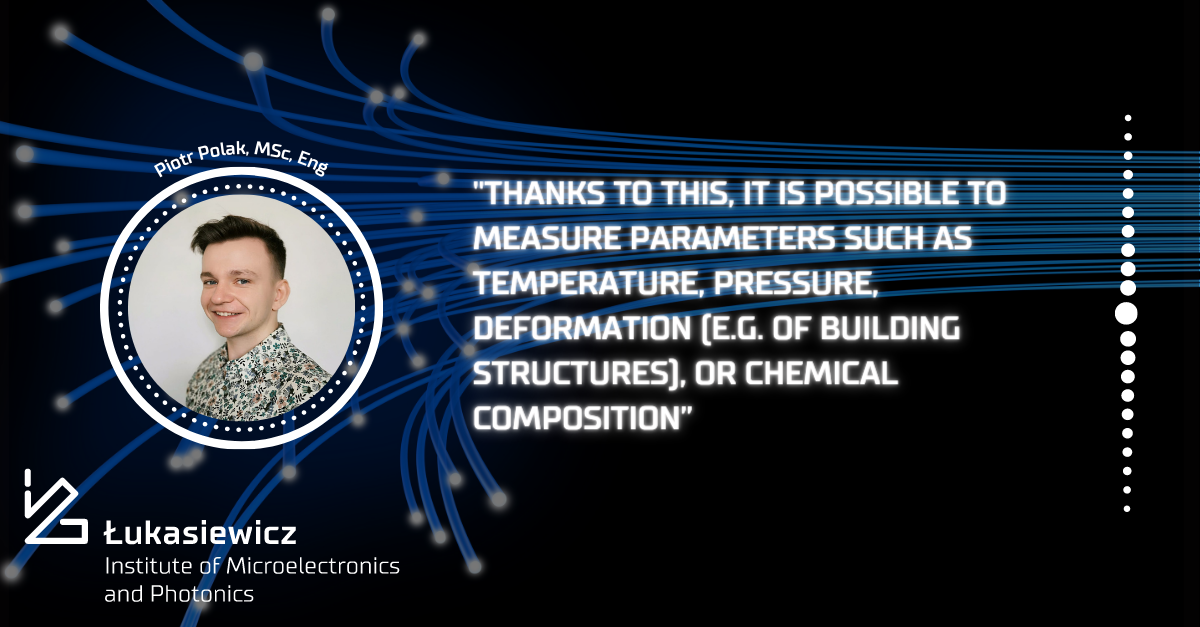Let’s delve into the world of photonics! If it were a building, it would be… a monument. Were you aware that the technology behind fiber optic sensors, which entails employing light to detect physical properties, traces its origins back to the 1970s?
However, significant progress has been made over the years, leading to improvements in sensor performance and the expansion of their applications. The development of specialized optical fibers and detection techniques has increased their sensitivity and made measurements in difficult conditions possible.
„Fiber optic sensors are devices that use optical fibers to detect and measure various physical parameters. These sensors use the light propagation through optical fibers to detect changes in the surrounding environment. Thanks to this, it is possible to measure parameters such as temperature, pressure, deformation (e.g. of building structures), or chemical composition” – tells us Piotr Polak, MSc, Eng.
Fiber optic sensors are used in many industries. One of the key advantages of these sensors is their immunity to electromagnetic interference, making them suitable for environments with high levels of electromagnetic interference. An example of such an environment can be all kinds of power plants, which, due to the presence of many high-voltage devices, generate strong electromagnetic fields.
They are commonly used in structural health monitoring of bridges, dams, and buildings to detect strain and deformation. In the oil and gas industry, fiber optic sensors are applied to measure temperaturę and pressure in tanks and pipelines. They are also used in medicine for various purposes, such as monitoring vital signs or detecting biochemical changes. Our sensor detecting the presence of the SARS-CoV-2 coronavirus is used for the latter.
The future of fiber optic sensors looks promising. Ongoing research and development work is focused on increasing their capabilities, including higher sensitivity, the ability to measure multiple parameters simultaneously, and miniaturization for integration into compact devices. In addition, efforts are being made to improve the reliability and durability of these sensors, allowing them to withstand extreme conditions and extend their lifetime. This is what our researcher, Piotr Polak, works on in the Łukasiewicz – IMiF laboratories.


